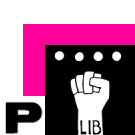Reflection on my practice - Trim Three
Title
Introduction Current Practice (resource: here you can use the descriptions of recent work)
Here are some keywords / brainstorming of ideas I've been through: body language - performance - articulation - movement - sequences - patterns - choreography - structures - diagrams - grids - systems - codes - algorithm - hypertext - gramathology - visual statements - construction of narratives - communication - visualization of information - experience - perception - . speech and body.
Transmission: : the act or process by which something is spread or passed from one person or thing to another. an act, process, or instance of transmitting.
Communication : an act or instance of transmitting. the ways of sending information to people by using technology. the act or process of using words, sounds, signs, or behaviors to express or exchange information or to express your ideas, thoughts, feelings, etc., to someone else.
from: www.merriam-webster.com/dictionary _
Relation to previous practice
How does your current work connect to previous projects you have done? (resource: here you can use a) the descriptions of older work b) extracts from your interview.)
I have previously studied graphic design, and I am now taking a master on media design. At first I was mainly facing the “blank“ paper paradigma; Then, came the “blank“ screen. Both spaces for information display highly interest me. Most recently, a 3rd dimension to space intregated my prac- tice. My current research relies on movement as an agent for communication, a sensory motor for understanding the world around us, bringing consciousness in focus. Following my background in dance and performance, I am willing to investigate further on sense experience and how knowledge is achieved by the interrelation between brain - body - world. “There are differences between the chalk and the rest of the universe, between the chalk and the sun or the moon. And within the piece of chalk, there is for every molecule an infinite number of differences between its location and the locations in which it might have been. Of this infinitude, we select a very limited number, which become information. In fact, what we mean by information—the elementary unit of information—is a difference which makes a difference, and it is able to make a difference because the neural pathways along which it travels and is continually transformed are themselves provided with energy. The pathways are ready to be triggered. We may even say that the question is already implicit in them.” - Gregorory Bateson Communication in its definition relies on movement, as the act of transmitting information to people by using different means.
Graphic design, layout and compostion. TRhe display of information, interfaces. White space should not be considered merely 'blank' space — it is an important element of design which enables the objects in it to exist at all;
Relation to a larger context
William Forsythe: choreographic objects essay
http://www.ubu.com/dance/index.html
http://sarma.be
Research strands
WHAT HOW WHY
on COMPOSITION /
on EXPERIENCE / MOVEMENT
This essay aims to summarize my recent readings and further notations for my self-directed research.
As to better support my recent projects and deepen my knowledge on my interest towards choreography and performance; I found relevant to research on sense experience and how knowledge is achieved by the interrelation between brain - body - world. One of my references being Alva Noë, one of the theorists that inspired the EEC programme - Embodied Embedded Cognition.
Noë investigates the structures of experience and consciousness (what philosophers call phenomenology); Presenting experience as the "basis of accessibility", allowing humans into "achieving access to the environment".
In an interview with Marlon Barrios Solano, part of the Embodied Techne Series (2012), Noë discusses "Dance As A Way Of Knowing".
He explores the idea that human consciousness is something we enact or achieve, in motion, as a way of being part of a larger process. Motion as "sensory motor understanding is what brings the world into focus for consciousness."
Noë highlights the fact that motion relies on a "temporally extended involvement", which enhances sensorial perception and consequently produces sensorial change: "transformations that happens in you while you go across the process; what is that transformation? Is understanding, is seeing connections, is knowing your way around."
Dance as a way to enact experience, thinking in motion - "dance in a sense of performance is an enactment or modeling of this fundamental fact about the world around us, which we dynamically interact with.".
In dance, along with similar kinesthetic experiences, the human body reaches an intense sensorial perceptual experience, composed of information from many places in the body, finding the need to have an understanding of/ control over of sensory consequences of their own movement. It can be seen either as personal, depending on the case- collective, confrontation - creating great awareness.
on DOCUMENTATION / RECORDING / DATABASE
both avant-garde and deeply traditional
In the near future I would like to better understand how to structure databases in different ways and explore compositional innovations that could come along with it. Looking at the past and future in the present moment. I believe that not only imagery, but other forms of content, such as sound and written text could enhance and generate better understanding of this kind of experiments. As in different choreography databases, in which different language systems are integrated in scores.
Lev Manovich, Database as a Symbolic Form
Conclusion
